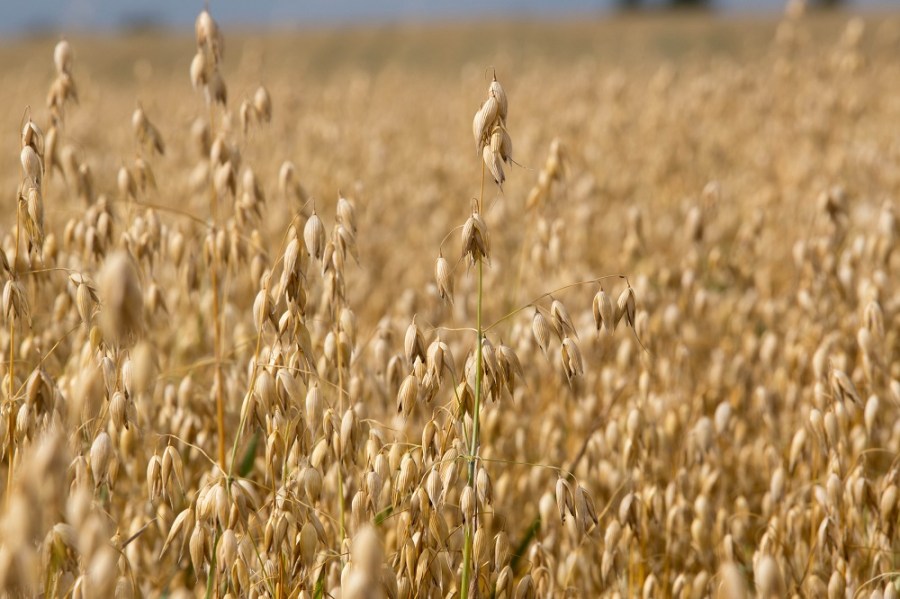A total of 28 new varieties have been added to AHDB’s Recommended Lists for cereals and oilseeds (RL) 2023/24, including the first new winter malting barley and winter oat varieties for several years.
Launched today (28 November 2022), the latest update was released alongside details of a major review of the RL, which aims to help the variety trialling project keep pace with the industry’s evolving requirements.
Responding to the smaller number of arrivals this year, Paul Gosling, who manages the RL at AHDB, said this is due several years of plant-breeding advances mean the recommendation bar is set high. “Relatively few candidate varieties performed better than the best listed varieties to secure a recommendation.”
Barley
RL 2023/24 includes several new barley varieties that bring strength to yield and disease resistance.
The winter barley list includes the first malting variety added since 2018. According to AHDB, Buccaneer, from Saaten Union, offers a significant yield increase over the established two-row malting varieties, Craft and Electrum, alongside good disease resistance.
Two new two-row and one new six-row hybrid varieties add strength to winter barley feed yields (compared with current favourites), says the levy board. The two rows are Bolivia, from Agrii (bred by Nordic Seed), and LG Caravelle, from Limagrain. The latter offers a particularly high yield in the East region and a good specific weight.
The new six-row hybrid SY Nephin, from Syngenta, is notable for its disease resistance ratings of 8 for brown rust and rhynchosporium.
There are six new spring barley varieties under evaluation by the Malting Barley Committee (MBC): three for brewing, two for brewing and malt distilling, and one for malt distilling.
These offer improvements in yield and/or disease resistance (compared with the current market leaders, RGT Planet and Laureate).
The spring barley list also sees feed variety Hurler added. Bred by Secobra and available through Agrii, high yield is its standout feature.
Paul said: “RL 2023/24 delivers exciting potential for brewing and distilling. However, it’s a tough market to break into, with varietal success determined by end users. As varieties can fail to make the grade, farmers should talk to merchants before growing them.”
Oilseed rape
The winter oilseed rape list features three new UK-recommended hybrid varieties: Vegas and Turing, from LSPB, and Attica, from Limagrain. Turing and Attica have especially high yields in the North region.
Recommended for the East/West region, Murray, from LSPB, has a high yield and a resistance rating of 8 for stem canker. Recommended for the North region, LG Wagner, from Limagrain, achieved the highest yield in this region and possesses good resistance to light leaf spot.
A new conventional variety for the UK, Tom, from CBI, offers a small yield increase but adds options for this important seed-market component. The list also includes Beatrix from DSV, a new Clearfield variety for the North region.
Oats
The RL 2023/24 also features the first newly added winter oat variety since RL 2018/19.
Cromwell, from Senova, offers good yield and grain quality. New spring oat variety RGT Vaughan also features good grain quality.
Wheat
For winter wheat, the latest RL includes one new UKFM Group 2 bread-making variety, KWS Ultimatum, and one new UKFM Group 3 biscuit-wheat variety, RGT Wilkinson.
The list also adds two new feed varieties for the East/West region: hard-textured Oxford, from DSV, and soft-textured LG Redwald. The latter requires careful lodging management.
There is also a new soft Group 4 for the North region, KWS Zealum, which is likely to be of interest to the distilling market.
Three new varieties have been added to the spring wheat list, offering good grain quality and yields: UKFM Group 1 KWS Harsum, which has particularly high yield, and UKFM Group 2 KWS Alicium and KWS Lightum.
Assessment developments
In recent years, the RL has seen significant developments in the assessment of disease resistance and lodging traits. In comparison, the latest edition features relatively minor changes, including:
1. Young-plant yellow rust resistance/susceptibility data for winter wheat (to aid early treatment decisions).
2. Alpha linolenic acid (ALA) content for spring linseed (as premiums may be available for high ALA varieties).
3. Untreated yield data for winter oats (reintroduced to reflect current grower preferences).
4. Refined approach to septoria tritici disease ratings in winter wheat (in response to recent pathogen population change).
The RL 2023/24 for wheat, barley, oats and winter oilseed rape can be accessed online, alongside updated descriptive lists for spring oilseed rape, spring linseed, winter triticale and winter rye. The print edition will be available later this winter.
Look out for a more in depth review of the latest additions in the December issue of CPM…




